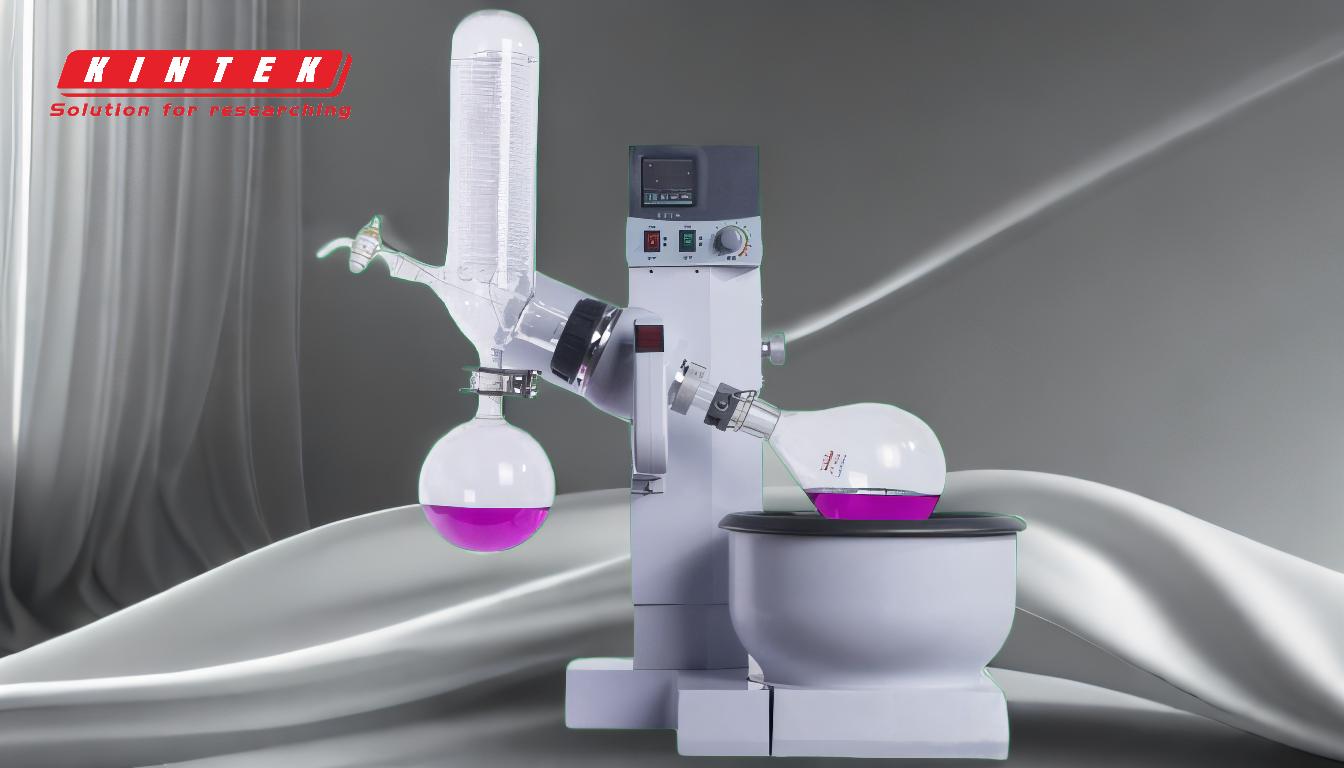Distillation experiments are conducted to separate components of a liquid mixture based on their differing volatilities. This process involves heating the mixture to vaporize the more volatile components, which are then condensed back into liquid form, resulting in purified substances. Distillation is widely used in chemical laboratories, industrial settings, and even domestic applications to achieve high-purity products, remove impurities, or isolate specific compounds from complex mixtures. The technique leverages differences in boiling points and thermodynamic properties to achieve effective separation.
Key Points Explained:

-
Separation of Components Based on Volatility:
- Distillation is fundamentally a separation technique that relies on the differing volatilities of components in a liquid mixture. Volatility refers to a substance's tendency to vaporize, which is directly related to its boiling point.
- By heating the mixture, the more volatile components (those with lower boiling points) vaporize first, leaving behind less volatile components. These vapors are then condensed back into a liquid, resulting in a purified product.
- For example, in a mixture of water and ethanol, ethanol (boiling point ~78°C) will vaporize before water (boiling point ~100°C), allowing for their separation.
-
Purification of Substances:
- One of the primary purposes of distillation is to purify substances by removing impurities or unwanted components. This is particularly important in chemical laboratories and industries where high-purity materials are required.
- For instance, in the production of distilled water, impurities and dissolved solids are left behind in the original container, while the vaporized water is collected as pure distilled water after condensation.
-
Isolation of Specific Compounds:
- Distillation is also used to isolate specific compounds from complex mixtures. This is especially useful in organic chemistry, where reactions often produce mixtures of multiple compounds.
- By carefully controlling the temperature and pressure during distillation, specific compounds can be selectively vaporized and collected. For example, fractional distillation is used in petroleum refining to separate crude oil into its various components, such as gasoline, diesel, and kerosene.
-
Removal of Volatile Solvents:
- In many industrial and laboratory processes, volatile solvents are used to dissolve or carry other substances. Distillation is employed to remove these solvents after their purpose has been served.
- For example, in the pharmaceutical industry, solvents used in drug synthesis are often removed through distillation to obtain the final product in a pure form.
-
Leveraging Thermodynamic Properties:
- Distillation exploits the thermodynamic properties of the components in a mixture, particularly their boiling points and vapor pressures. These properties determine the ease with which a component can be vaporized and subsequently condensed.
- By understanding and manipulating these properties, distillation can be optimized to achieve the desired separation efficiency. For instance, vacuum distillation is used to lower the boiling points of substances, making it possible to distill heat-sensitive materials without decomposition.
-
Applications Across Various Fields:
- Chemical Laboratories: Distillation is a fundamental technique in chemistry labs for purifying reagents, isolating reaction products, and preparing samples for analysis.
- Industrial Factories: Large-scale distillation processes are used in industries such as petrochemicals, pharmaceuticals, and food and beverage production to separate and purify raw materials and products.
- Domestic Use: Simple distillation setups, such as those used to produce distilled water or alcoholic beverages, are common in households.
-
Types of Distillation Techniques:
- Simple Distillation: Used for separating components with significantly different boiling points.
- Fractional Distillation: Employed for mixtures with components having closer boiling points, using a fractionating column to enhance separation.
- Vacuum Distillation: Used for substances that decompose at high temperatures, by reducing the pressure to lower their boiling points.
- Steam Distillation: Applied to separate heat-sensitive compounds, such as essential oils from plant materials, by introducing steam to carry the volatile components.
In summary, distillation experiments serve the critical purpose of separating, purifying, and isolating components from liquid mixtures by exploiting differences in their volatilities and thermodynamic properties. This versatile technique finds applications across a wide range of fields, from scientific research to industrial production and everyday household tasks.
Summary Table:
| Key Aspect | Description |
|---|---|
| Separation of Components | Separates components based on differing volatilities and boiling points. |
| Purification | Removes impurities to produce high-purity substances. |
| Isolation of Compounds | Isolates specific compounds from complex mixtures. |
| Volatile Solvent Removal | Removes solvents used in industrial and lab processes. |
| Thermodynamic Properties | Leverages boiling points and vapor pressures for efficient separation. |
| Applications | Used in labs, industries (petrochemicals, pharmaceuticals), and households. |
| Techniques | Includes simple, fractional, vacuum, and steam distillation methods. |
Discover how distillation can enhance your lab or industrial processes—contact us today for expert guidance!










